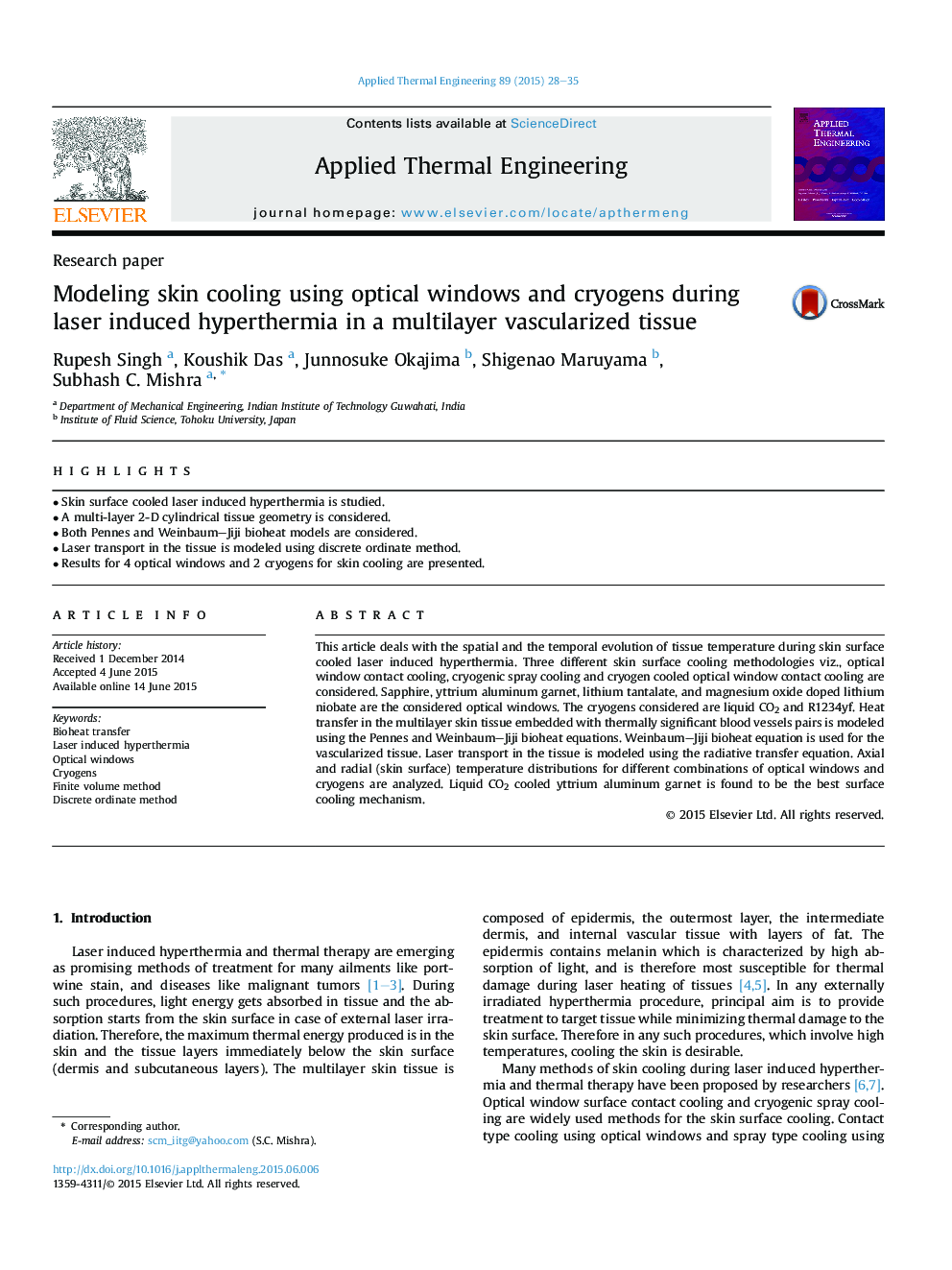| کد مقاله | کد نشریه | سال انتشار | مقاله انگلیسی | نسخه تمام متن |
|---|---|---|---|---|
| 645342 | 1457139 | 2015 | 8 صفحه PDF | دانلود رایگان |

• Skin surface cooled laser induced hyperthermia is studied.
• A multi-layer 2-D cylindrical tissue geometry is considered.
• Both Pennes and Weinbaum–Jiji bioheat models are considered.
• Laser transport in the tissue is modeled using discrete ordinate method.
• Results for 4 optical windows and 2 cryogens for skin cooling are presented.
This article deals with the spatial and the temporal evolution of tissue temperature during skin surface cooled laser induced hyperthermia. Three different skin surface cooling methodologies viz., optical window contact cooling, cryogenic spray cooling and cryogen cooled optical window contact cooling are considered. Sapphire, yttrium aluminum garnet, lithium tantalate, and magnesium oxide doped lithium niobate are the considered optical windows. The cryogens considered are liquid CO2 and R1234yf. Heat transfer in the multilayer skin tissue embedded with thermally significant blood vessels pairs is modeled using the Pennes and Weinbaum–Jiji bioheat equations. Weinbaum–Jiji bioheat equation is used for the vascularized tissue. Laser transport in the tissue is modeled using the radiative transfer equation. Axial and radial (skin surface) temperature distributions for different combinations of optical windows and cryogens are analyzed. Liquid CO2 cooled yttrium aluminum garnet is found to be the best surface cooling mechanism.
Journal: Applied Thermal Engineering - Volume 89, 5 October 2015, Pages 28–35